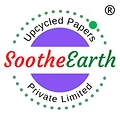From Waste to Wonder: The Journey of Banana Stem to Paper
There’s something magical about seeing waste transformed into something beautiful and useful. When I first heard about banana stem paper, I was intrigued. Could something as ordinary—and usually discarded—as a banana plant stem really become paper?
Spoiler alert: Yes, it can. And it’s one of the most inspiring examples of eco innovation I’ve come across.
Let me take you behind the scenes of the upcycled paper making process, and show you why I’m such a big fan of this sustainable alternative.
What is Banana Stem Paper?
Banana stem paper is made from the fibers of banana plants—the same plants that grow one of the world’s most popular fruits. After bananas are harvested, the stems are typically seen as agricultural waste.
But innovators and artisans saw something different: a strong, fibrous material perfect for papermaking.
By turning banana waste into stationery, we create a product that is:
- Tree-free
- Chemical-free
- Completely biodegradable
- And totally beautiful
The Upcycled Paper Making Process
Here’s how banana stem waste becomes the paper I write on every day:
1. Harvest Waste
Banana plants are cut after the fruit is picked. Instead of burning or discarding the stems, farmers collect and dry them.
2. Fiber Extraction
The dried stems are stripped of their tough outer layers. Inside, long, durable fibers are carefully separated by hand.
3. Pulping the Fibers
These fibers are softened using natural soaking and mechanical pressing. Unlike traditional paper, there’s no chemical bleaching involved.
4. Sheet Formation
The pulp is spread on mesh screens and sun-dried to form sheets of paper. This process gives banana paper its unique texture and strength.
5. Finishing Touches
Once dry, the sheets are trimmed and turned into eco-friendly notebooks, gift tags, and journals—ready for everyday use.
Why This is Eco Innovation at Its Best
To me, this process isn’t just about making paper. It’s about rethinking waste and proving that sustainability and creativity can go hand in hand.
What makes banana stem paper an eco innovation?
- It reuses agricultural waste that would otherwise pollute or be burned.
- It creates livelihoods for rural artisans and empowers local economies.
- It avoids harmful chemicals found in most commercial paper production.
- It saves trees—every notebook is a statement against deforestation.
The Beauty of Banana Paper in Daily Life
What I love about banana stem paper is that it doesn’t just feel good ethically—it also looks and feels amazing. It’s sturdy, textured, and perfect for:
- Journaling
- Sketching
- Gifting
- Personal reflection
And every time I use it, I feel connected to something bigger than just a product—I’m part of a movement.
Final Thoughts: Waste Is Only Waste If We Waste It
This journey—from farm waste to functional beauty—has changed how I see the world. It reminds me that sustainability is not about sacrifice; it’s about innovation.
If you’re ready to join the change, try out a banana stem paper notebook. You’ll never look at paper the same way again.
